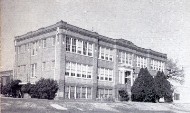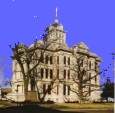




Milam County Historical Commission
Milam County, Texas
All credit for these articles go to
Susie Sansom-Piper and
the Rockdale Reporter
Milam County, Texas
All credit for these articles go to
Susie Sansom-Piper and
the Rockdale Reporter

Black History month articles
Written by Susie Sansom-Piper and
published in the Rockdale Reporter
Written by Susie Sansom-Piper and
published in the Rockdale Reporter
ON THE OTHER SIDE OF THE TRACKS, SERIES 8, PART 3
by Susie Sansom-Piper - Reporter Contributor
Rockdale Reporter - 2015-02-19
Editor’s note: This is the third article in the eighth series of “On the Other Side of the Tracks,” a Black
History Month series by former Rockdale resident, and longtime teacher, Susie Sansom-Piper.
The 50s: Aycock trains future leaders
Success is not measured by numbers, nor dollars and cents, but it comes from
determination, and perseverance.
With the arrival of Alcoa in the 1950s, living conditions began to improve. New families
moved to Rockdale, and some of the residents no longer depended on farm labor and
domestic labor.
Aycock School was still functioning in the original orange Rosenwald building on Third
and Pecan Street, but due to an increased enrollment, two more teachers were added.
Community love and cooperation were still prevalent, and oft times needed funds were
obtained for the school through combined school and community talent shows.
The Parent-Teacher Association was headed by Clemmie Goins for many years. There was an
oddity to her willingness to work in the community, for she had no children of her own.
Her home was the “rooming” place for teachers who came from other towns to teach at
Aycock.
This era is often known as “The Decade of Champions” for Aycock, for there were state
winners in literary events, football, basketball, track, band, debate and home economics.
It was also the beginning for the Aycock Band, under the leadership of Theaul Howard.
Their performances were amazing, because they consisted of sixth, seventh and eighth-
grade students.
What is little known is that many of the students from Rockdale High School would visit
the Aycock Band Hall and practice with this little band.
This was the beginning of integration in the Rockdale schools, long before the Civil
Rights Law, the students were unofficially “integrating themselves.”
These same ideals were followed through by students on both sides of the tracks on the
basketball courts, as well.
During this era, Common School Districts were eliminated by the Texas Education Agency,
and high school students from Milano, Griffin Chapel, Thorndale, Sharp, Tracy, Gause, and
Leo (between Lexington and Rockdale) were affected.
Aycock moved to a new campus in 1954, remaining until final integration in 1967. This
move provided more action and attendance of school functions in the community.
Many students from both campuses (the old and new), brought a measure of pride and fame
to their communities through their endeavors after leaving Aycock.
They included: Emma Lee Banks, Allie M. Banks-Powell, Bertha Thomas-Kline, Eula A.
Sansom-Hebert, registered nurses.
Helen M. Crayton- Rhem, Johnnie M. Black-Steptoe, Pearlie M. Haynes, Mildred Wilhite-
Lovelady, Matthew Cook, Samuel Tucker, Fannie L. Lovelady-Spain, Margaret Sanders-Green,
Sharon Williams-Stein, Barbara Sansom-Holsome, and Oscar E. Wilhite, educators in Texas,
Arizona, Mississippi. and California.
Leo Scott, pharmacist, and Abilene City Councilman; Lee Earl Gadison, lifetime Armed
Services.
Athletics include William Preston Moultrie, coach, Stanford and Howard Universities;
Billie Jean Walton, Billie Ray Locklin, Frank C. McKee, James Leroy Wright, pro
football/basketball.
Bob Roberson, postal supervisor, Arizona; Lucy Ray Crawford, Billie Eugene Gray, business
owners, California, Texas.
John F. Williams, engineer; George Lee Molden, Lawrence Bacy, Overton David Smith,
ministers in South Carolina, Oklahoma, California.
Marie E. Moore, Texas Highway Department; James Lee Molden and Lovie Molden-Edwards, law
officials in Texas.
These former students have left an indelible imprint on the sands of time.
Their services “on the other side of the tracks” will always remain as a reminder of
things left behind. Although their contributions may not be engraved in stone, they will
somehow be woven into future generations.”
New Aycock High School opened in 1950s,
hosted some ‘unofficial integration.’

.